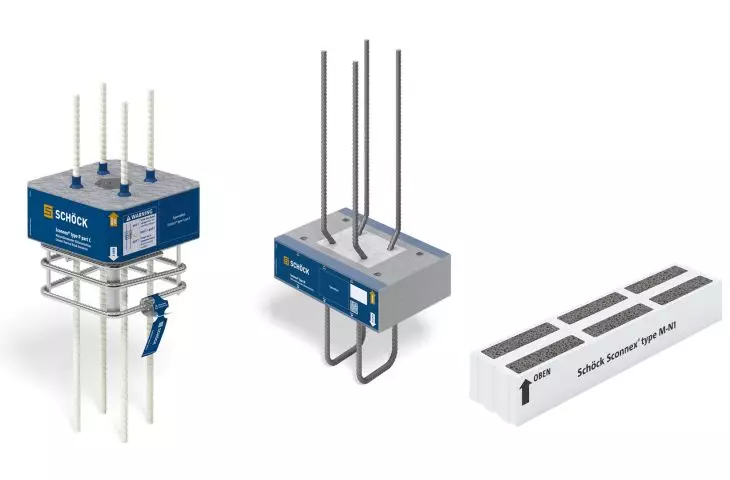Climate protection and sustainability are also gaining importance in the construction industry, resulting in increasing demands on building insulation. Poland's Climate Neutrality Strategy 2050 focuses on sustainable construction, with the reduction of energy losses in buildings at the center of the strategy. In particular, attention is being directed at thermal bridges, which represent the last opportunity to significantly optimize a building's energy balance.
At present, thermal bridges within wall and column connections cause large energy losses - in addition, damage to building structural elements caused by condensation or mold is common there. Only through building envelopes with uninterrupted thermal insulation, which also includes consistent insulation of thermal bridges at the base of the building, can the necessary additional energy savings be achieved.
Schöck is also transferring its expertise in the thermal insulation of balconies to walls and columns in the new Sconnex® product family. A consistent further development of the successful technology used to minimize thermal bridges, Schöck Sconnex® connectors are milestones for energy-efficient construction and the concept of sustainable buildings.
Schöck Sconnex® represents the fulfillment of a hitherto unsolved challenge. With Sconnex® W-type, P-type and M-type elements, walls and columns can now be insulated efficiently.
Thermal bridges at walls and columns within the connections to ceilings or floor slabs cause large energy losses. The result is the formation of condensation and mold. With Schöck Sconnex®, thermal bridges are insulated in such a way that there is no need for the usual side insulation. This not only improves the physical properties of the building, but also brings economic and design benefits.
Cost-effectiveness:
- Increased quality and sustainability
- Cost-neutral due to the saving of lateral insulation for walls and columns
- Reduction in the thickness of exterior insulation
Appearance:
- Improved appearance by dispensing with side wall and column insulation
- Design freedom for building elements with unfavorable thermal exposure
- Increased design freedom for challenging building geometries
Building physics:
- The high temperature of the inner wall surface protects against damage to building structural elements
- Uninterrupted thermal insulation plane provides design certainty
- Increased energy efficiency by reducing the share of thermal bridges
For more information, visit the company's SCHÖCK Sp. z o.o. page on the A&B portal.
















